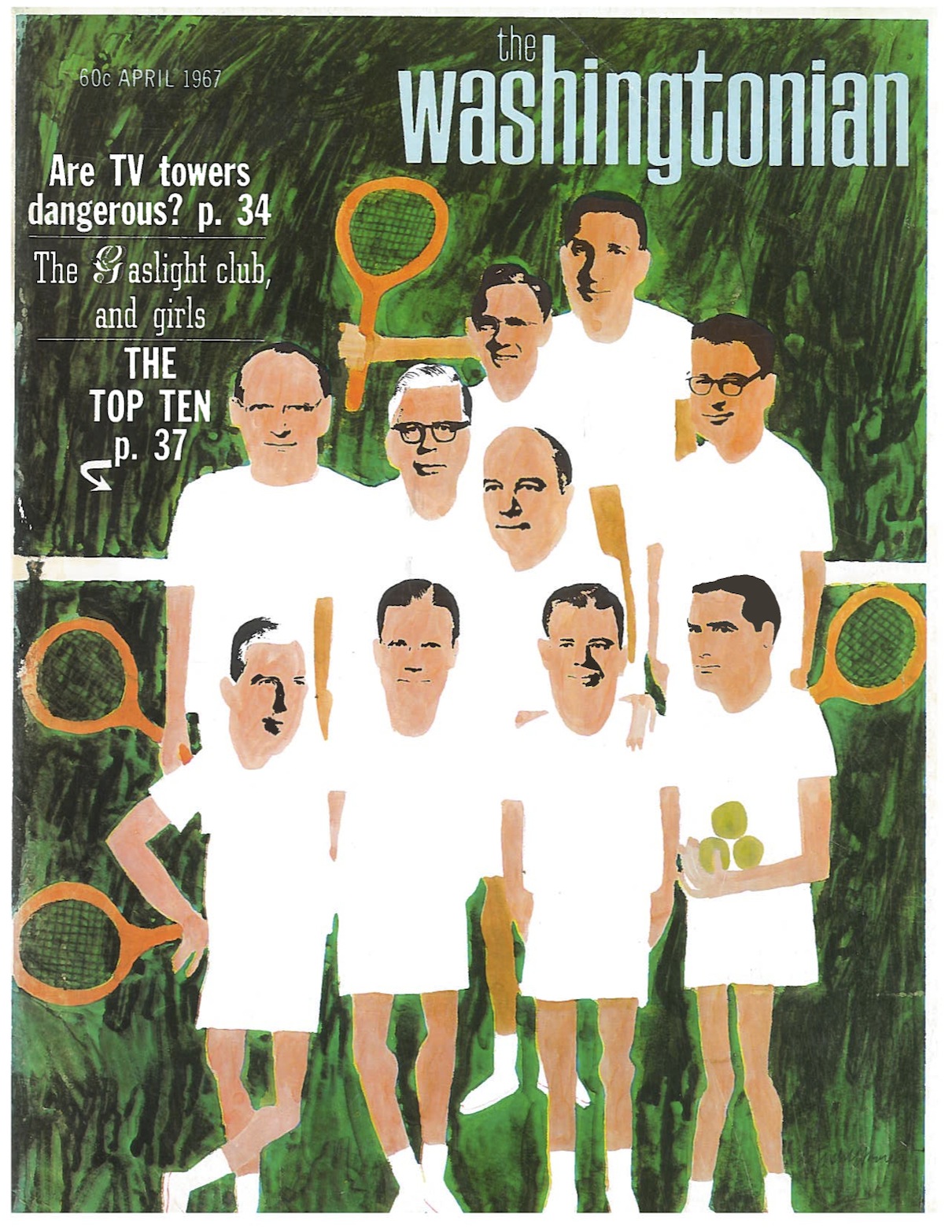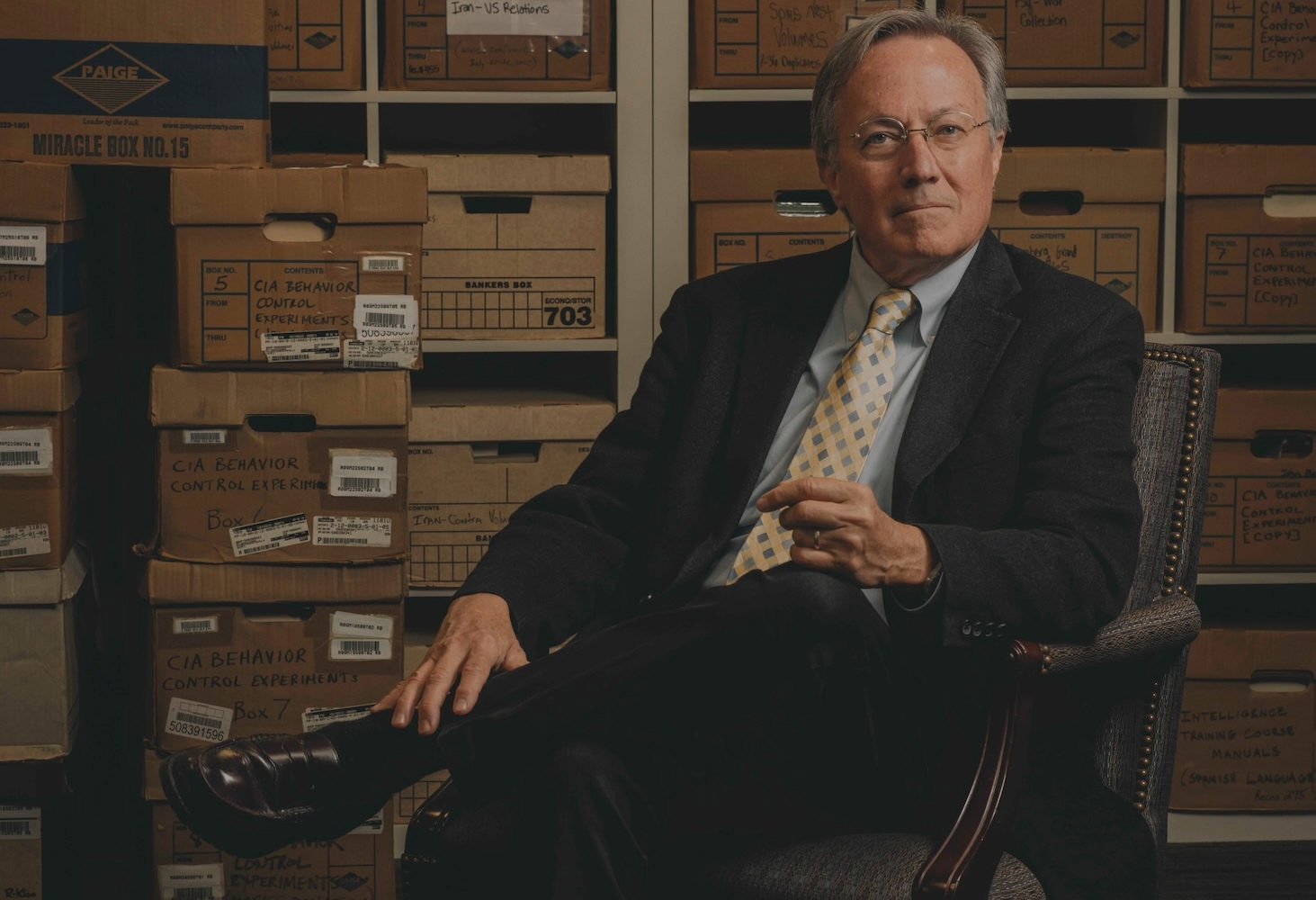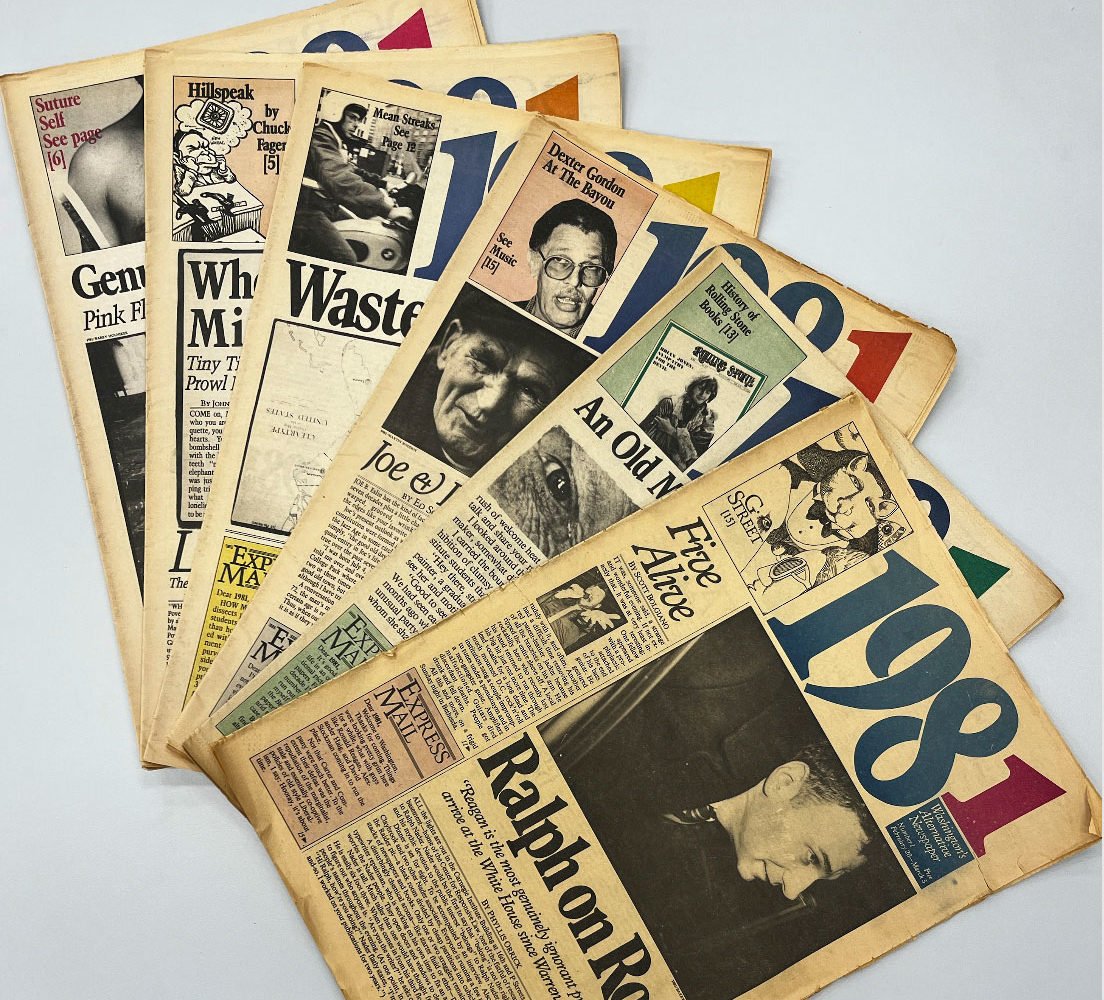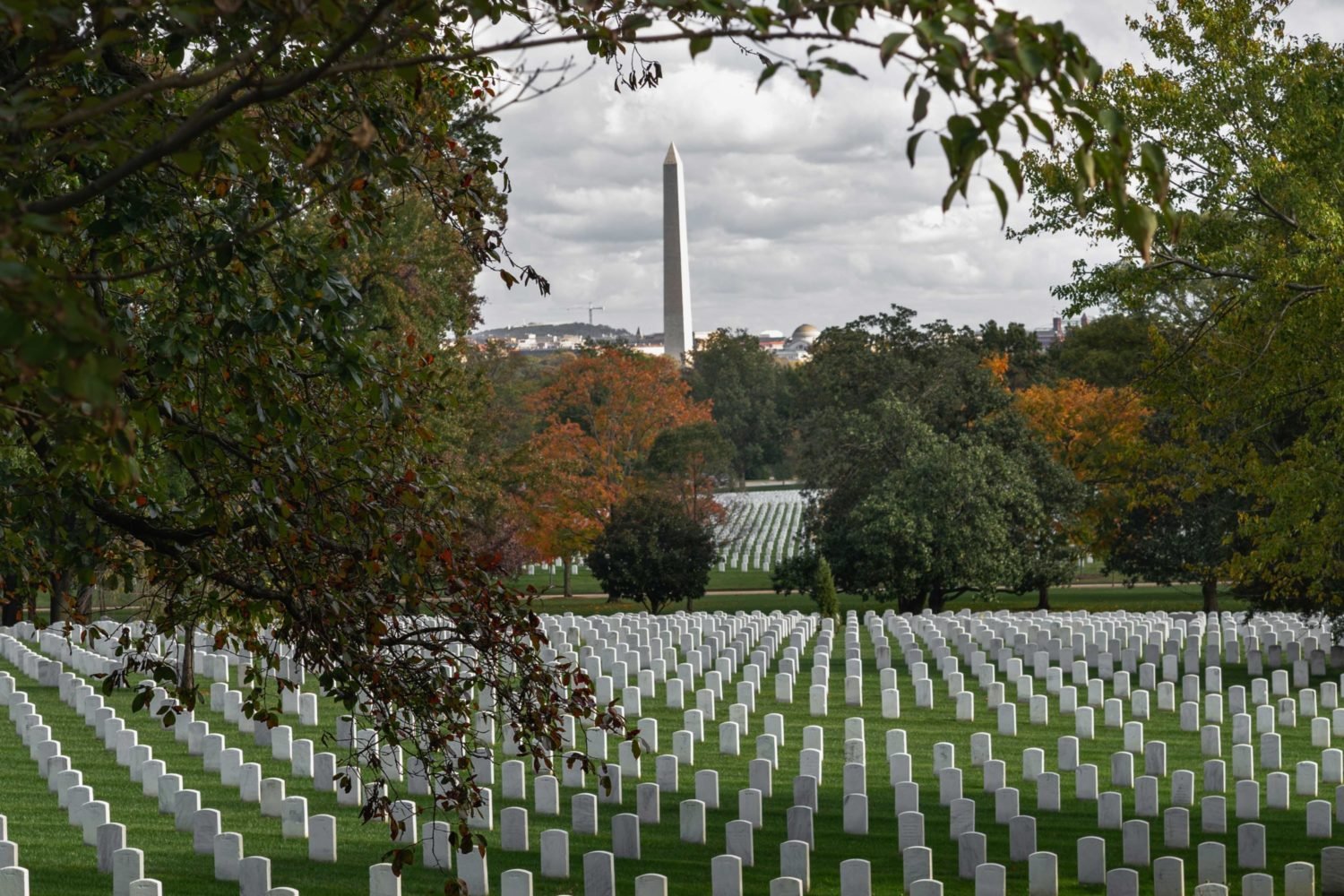Tennis has a proud history in political Washington–aside from the time it killed Calvin Coolidge’s younger son–and a long legacy in the pages of Washingtonian. In 1967, the magazine commissioned former tennis star C. Alphonso Smith to select the ten best tennis players in “official Washington,” plus the top five in Congress. Smith had by then won 14 national tennis championships, led the US Davis Cup team to a victory in Tehran in a match against the Iranians, and, in his off time, “played with most of the men” on our list.
A decade after Dwight D. Eisenhower ensured that golf was, as Smith wrote, “indubitably the ‘in’ game in Washington,” tennis was tops. President Lyndon B. Johnson had “never been known to play tennis,” but it didn’t matter: his White House led the field in our 1967 list, with Walt Whitman Rostow, special assistant to the president and poet on the court, ranked as “easily the best.”
Some in Congress disagreed with our list. A few weeks after it was published, Washington Post sportswriter Shirley Povich wrote that Senator Joseph S. Clark inserted Smith’s story into the Congressional Record–noting that the Pennsylvania Democrat was unranked because of “insufficient data.” (Clark’s father, Joseph Clark, Sr., was a champion tennis player who wound up in the International Tennis Hall of Fame.)
The magazine would release two additional editions of the list, in 1968 and 1970. Below, the full rankings of each year’s top 10 Great Society tennis stars.
1967
1. Walt Whitman Rostow, Special Assistant to the President: “Critics are wont to say that Walt’s backhand and our foreign policy bear a certain resemblance. Both are unorthodox and both tend to obfuscate rather than clarify the situation.”
2. Paul R. Ignatius, Assistant Secretary of Defense
3. Charles F. Baird, Assistant Secretary of the Navy
4. William McChesney Martin, Chairman of the Federal Reserve System
5. Normal S. Paul, Under Secretary of the Air Force
6. Stewart L. Udall, Secretary of the Interior: “It is on the tennis court that Secretary Udall reveals a Jekyll-Hyde personality. He plays tennis with a reckless abandon that is frightening to behold.”
7. James W. Symington, State Department’s Chief of Protocol: “In the service of his country, he is perfectly willing to let the Japanese Ambassador beat him. Until he develops the ‘killer instinct,’ Jim will not rise in our ladder.”
8. Robert McNamara, Secretary of Defense
9. Harold Brown, Secretary of the Air Force
10. Henry H. Fowler, Secretary of the Treasury: “On the shores of the Potomac, he has been so busy juggling the silver content of our coins, messing with the interest rate on Savings Bonds, and sticking a finger in the dike to stop the gold outflow, that he barely slips into our Top Ten.”
1968
1. Charles F. Baird, Under Secretary of the Navy: “He led the Navy team to a successful defense of its title as champions of the Governmental Tennis League and surprised everyone, except himself, by winning the Chevy Chase Club’s Member-Guest Tournament.”
2. William McChesney Martin, Jr., Chairman of the Board of Governors of the Federal Reserve System: “LBJ has offered to fill in the Lincoln Memorial reflecting pool and have it made into a tennis court, but Chairman Martin has pointed out that it does not face north and south and, of course, no self-respecting tennis player would step on a court where he looked directly into the sun.”
3. Walt Rostow, Special Assistant to the President
4. Paul R. Ignatius, Secretary of the Navy
5. Sargent Shriver, Director of the Office of Economic Opportunity
6. Harold Brown, Secretary of the Air Force: “Dr. Brown moves about the court with all the grace of a she-wolf in prowling time, but when he catches up with the ball he hits it crisply, particularly on the forehand.”
7. Stewart L. Udall, Secretary of the Interior
8. James W. Symington, former Chief of Protocol
9. Alexander B. Trowbridge, recently resigned Secretary of the Commerce: “‘Sandy,’ as he likes to be called, is tall and rangy. He hits the ball hard and, although he occasionally makes the rafters ring at Linden Hill, he gets enough of them in to earn a spot on our select list, an honor which keeps him in official Washington despite the loss of office.”
10. Robert S. McNamara, President of the International Bank for Reconstruction & Development
1970
1. Joseph Blatchford, Peace Corps Director: “He is the only top government official who has played in both the Wimbledon and Forest Hills championships. Joe quit playing tennis in the late 1950s when earning a living became of some importance.”
2. Bryce Harlow, Counsellor to the President
3. Winton Blount, Postmaster General: “Since the principal job of the Postmaster General is to oversee a decrease in mail service and a sizeable increase in the annual postal deficit, ‘Red’ Blount has plenty of time to work on his own service.”
4. Rogers C. B. Morton, Chairman of the Republican National Committee: “Although he moves about the court with the grace of a pregnant bear, he is tough to beat.”
5. Spiro T. Agnew, Vice President of the United States
6. George P. Schultz, Secretary of Labor
7. Robert H. Finch, Secretary of Health, Education and Welfare
8. General William C. Westmoreland, Chief of Staff, United States Army
9. George W. Romney, Secretary of Housing and Urban Development and father of Mitt
10. Emil Mosbacher, Jr., Chief of Protocol: “He decided our local waterway was for garbage scows, not sleek racing yachts, and he reached for his tennis racket.”










